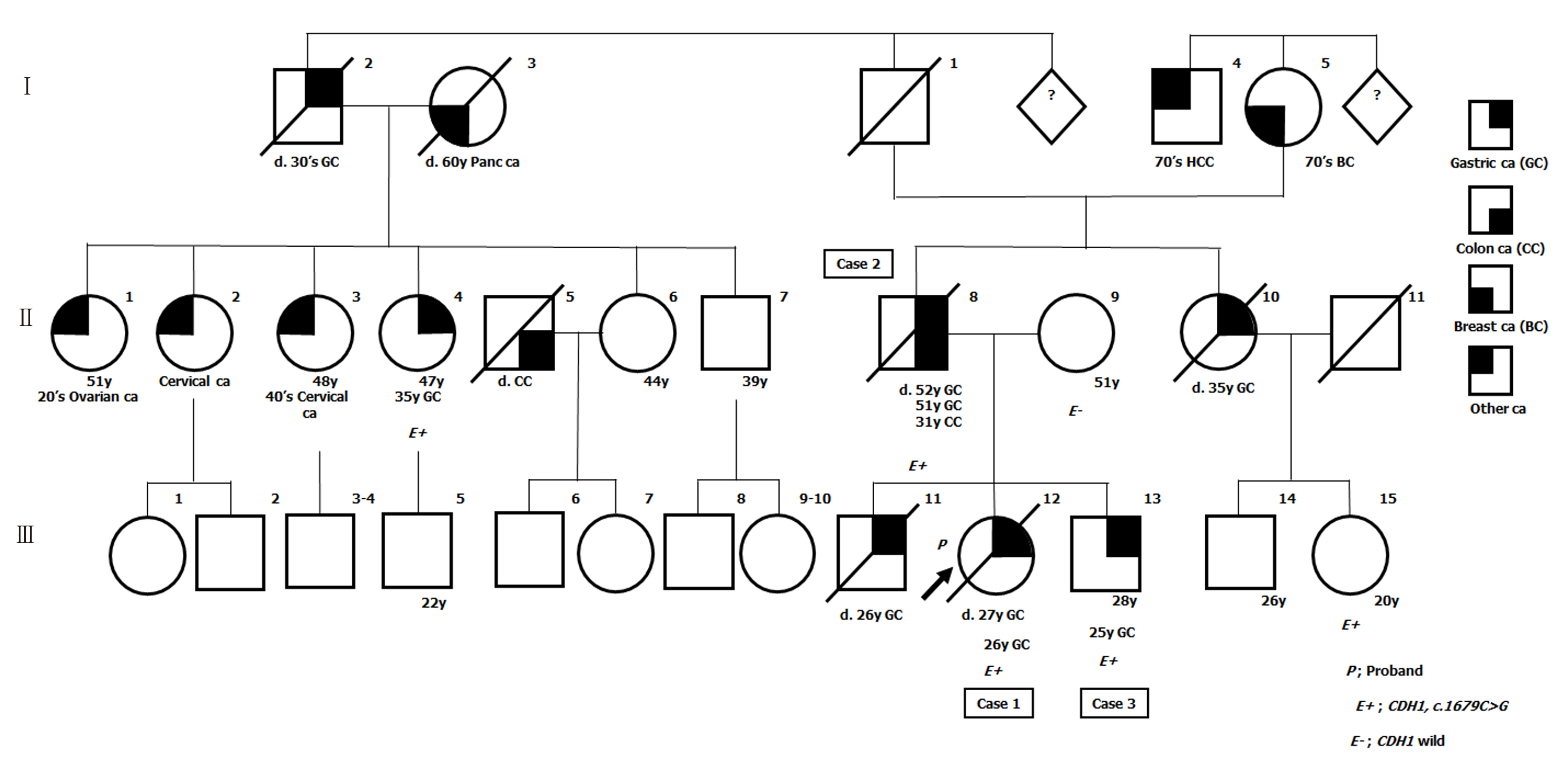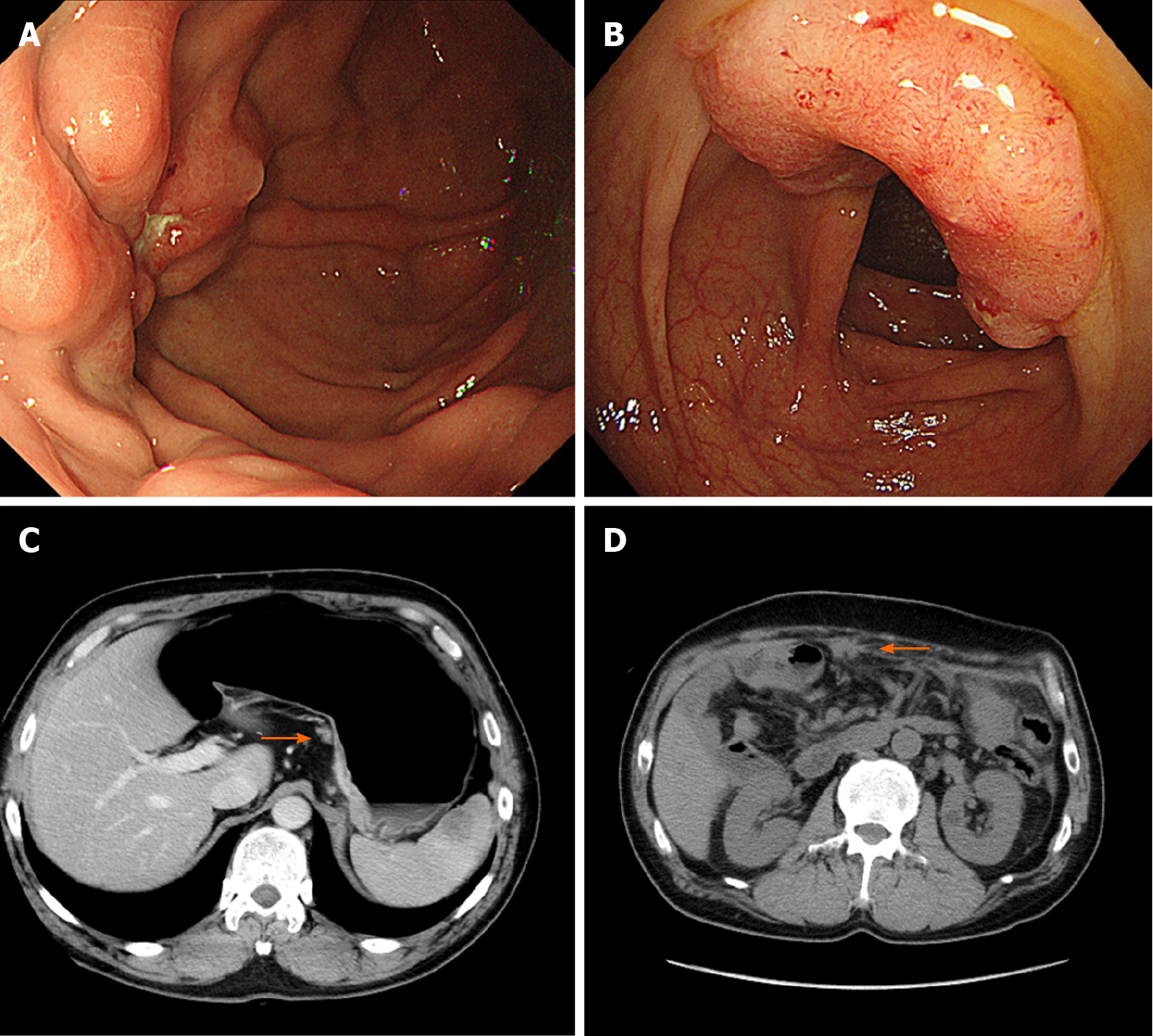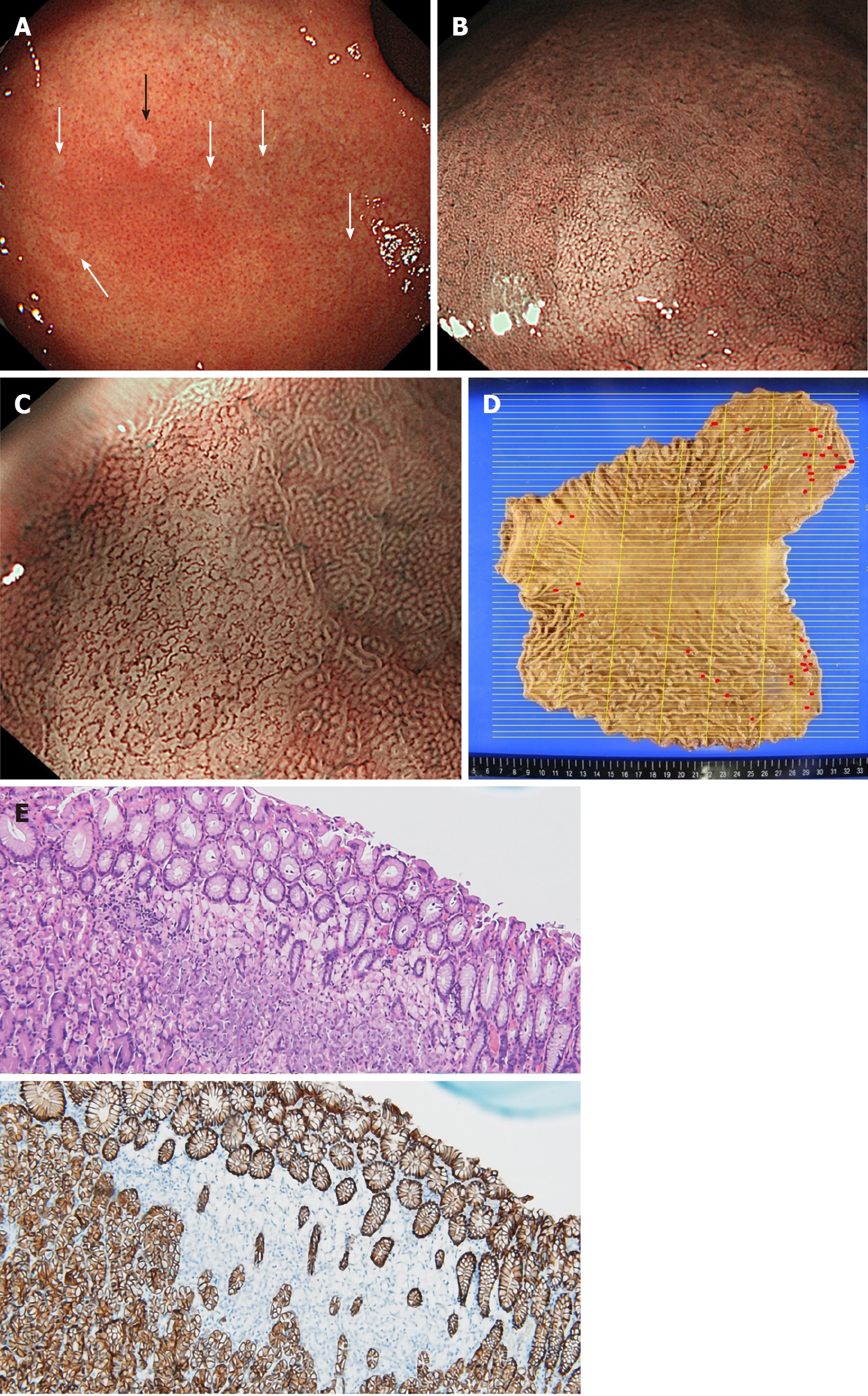Copyright
©The Author(s) 2020.
World J Gastroenterol. Nov 14, 2020; 26(42): 6689-6697
Published online Nov 14, 2020. doi: 10.3748/wjg.v26.i42.6689
Published online Nov 14, 2020. doi: 10.3748/wjg.v26.i42.6689
Figure 1 Pedigree of this family.
Several individuals with gastric cancer were confirmed in this family. In addition to Cases 1, 2 and 3, the CDH1 c.1679C>G variant was detected in II-4 and III-15 by further genetic analysis. GC: Gastric cancer; BC: Breast cancer; HCC: Hepatocellular carcinoma.
Figure 2 Representative images obtained from esophagogastroduodenoscopy and computed tomography in Case 1.
A and B: Advanced gastric cancer was observed at the posterior wall of the lower gastric body (A) and at the lesser curvature of the middle body (B) in esophagogastroduodenoscopy; C: Metastatic lymph nodes were detected at the lesser curvature of the proximal stomach by abdominal computed tomography (CT) (orange arrows); D: Abdominal CT showed ovarian metastasis during adjuvant chemotherapy (orange arrow).
Figure 3 Representative images obtained from esophagogastroduodenoscopy, colonoscopy and computed tomography in Case 2.
A: Advanced gastric cancer was observed at the fundus in esophagogastroduodenoscopy; B: Colonoscopy showed advanced colon cancer at the ascending colon; C: Metastatic lymph nodes at the lesser curvature of the proximal stomach without distant metastasis were identified by abdominal computed tomography (CT) (orange arrow); D: Peritoneal dissemination were observed by abdominal CT during the adjuvant chemotherapy (orange arrow).
Figure 4 Representative images obtained from esophagogastroduodenoscopy and pathological findings in Case 3.
A: Multiple small pale lesions were observed mainly at the greater curvature of the gastric body in esophagogastroduodenoscopy (white and black arrows); B: Clearly isolated whitish areas were detected by non-magnifying narrow band imaging (NBI). The image is the lesion indicated by the black arrow in (A); C: Magnifying NBI detected wavy microvessels inside the lesions; D: A gastrectomy mapping study revealed 36 signet ring cell carcinoma (SRCC) foci in the entire gastric mucosa. Red lines indicate SRCC foci; E: Hematoxylin and eosin staining (upper panel) and immunohistochemistry for E-cadherin (lower panel) of the lesion. Loss of immunoreactivity at SRCC foci was confirmed.
- Citation: Hirakawa M, Takada K, Sato M, Fujita C, Hayasaka N, Nobuoka T, Sugita S, Ishikawa A, Mizukami M, Ohnuma H, Murase K, Miyanishi K, Kobune M, Takemasa I, Hasegawa T, Sakurai A, Kato J. Case series of three patients with hereditary diffuse gastric cancer in a single family: Three case reports and review of literature. World J Gastroenterol 2020; 26(42): 6689-6697
- URL: https://www.wjgnet.com/1007-9327/full/v26/i42/6689.htm
- DOI: https://dx.doi.org/10.3748/wjg.v26.i42.6689












